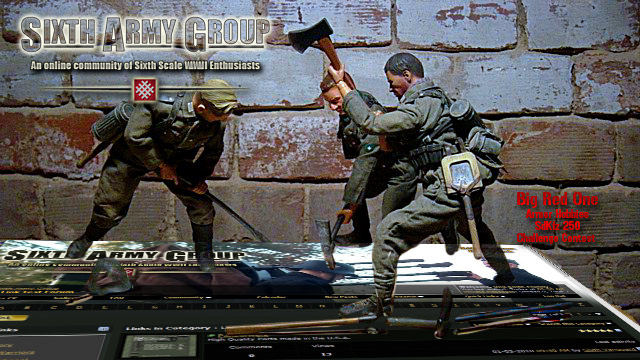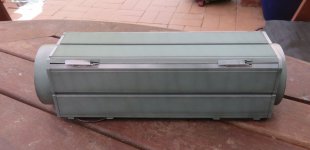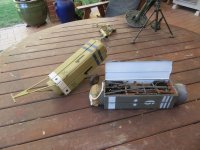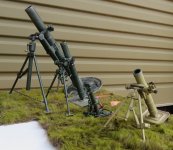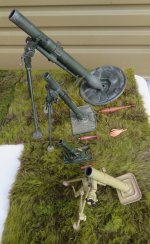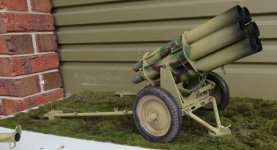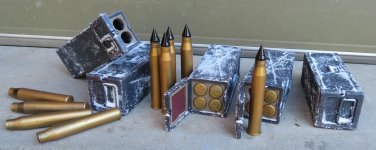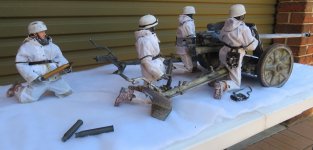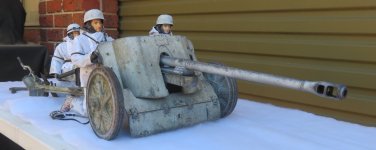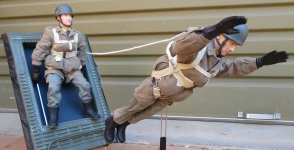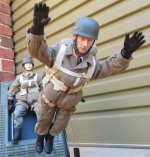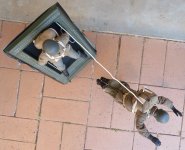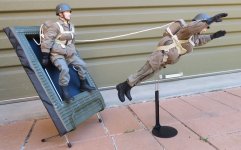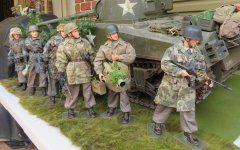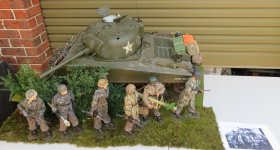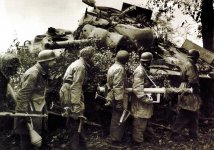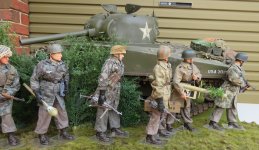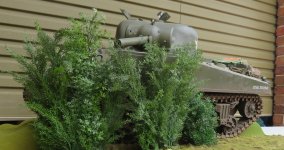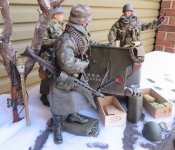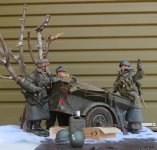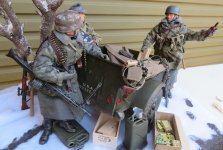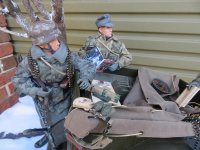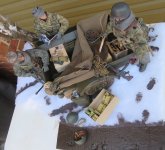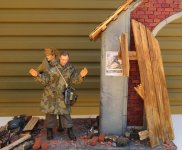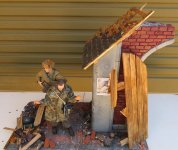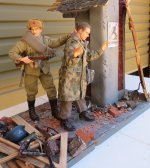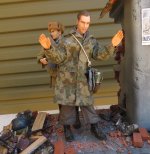And so completes my FJR story but before I close this one off, the last scene of Project 'Green Devil' features the Axis paratroopers of Italy and Japan.
On a sad sidenote, though I'd built all the scenes to display (and all are packed ready to go) for next week's annual model, a major spanner in the works means I won't be setting it up at this stage because of a miscommunication or two between myself and the model show club who hosts it.
Among the several spanners thrown in, I suspect that complete new venue hasn't helped and though they'd put out emails requesting the space required by participants and vendors (noting I'm actually not a member of the Club) I had not received any such emails so when I thought to enquire it apparently was too late and no suitable space left to allocate.
Though they've belatedly found a spot it is unfortunately way too small for the 20-odd tables I require to fit in all the scenes done. I had thought to compromise and cut down where possible but even with that I'd still require around a dozen tables and the area even too small for that number.
To be shoe-horned-in just won't cut it and I'd rather, for both visual effect and complete story-telling, wait until a couple of years down the path when a suitably-sized area is available for this one (now looking at 2026 lest a last-minute cancellation comes in for this year). At the least I finally put together my FJR which is something I've been hankering to do for years and I've a full theme 'jump-ready'. It is also a fitting end to my airborne trilogy having covered the British in 2014 ('Market Garden') and the Americans in 2019 ('Screaming Eagles' over Normandy).
There was also, for a second, the idea of putting it in next year; however, I've already plans for the next two years and they are fixed to fit in to two WW2 milestone anniversaries, namely the 80th Anniversary of D-Day next year and the end of WW2 the year after (which I'll cover with the USMC in the Pacific and the rising of the Stars & Stripes over Iwo Jima the centrepiece display for that...but more on that at the start of 2025).
But back to D-Day (under Project - 'Overlord'), yes the plans are foot, the figures and all the gear largely sorted for assembly and the planning for the dioramas layouts commenced. I expect to start this in March next year with, at this stage, ten scenes. Note that this won't cover the Normandy Campaign as a whole (phew, imagine that) but rather that first day of the assault. Lead-up scenes will cover a movie tie-in, Saving Ryan's Privates as I've found that pop culture (for the previous two shows) is a good way to lead-in to the factual narrative and what better way than with the all the figures of the cast (the reverse of the information board will also cover the movie - fact from fiction).
Dunkirk, Dieppe, the French Resistance and their roles, the state of the German army guarding the Calvados Coast, the airborne flanks and then I'll push into the assault forces and areas (beaches) - British, Canadian and American with the centre diorama (the largest) on 'Omaha' Beach...somewhat overwhelming to think about at this stage but as with previous efforts it'll be an enjoyable series build which, as per usual, I'll be happy to share on SAG.
Meanwhile, as we steer towards Christmas, I do wish all the best in festive fun to all on SAG and their families and that each of you find a figure or two under the tree on Christmas Day. Steve
